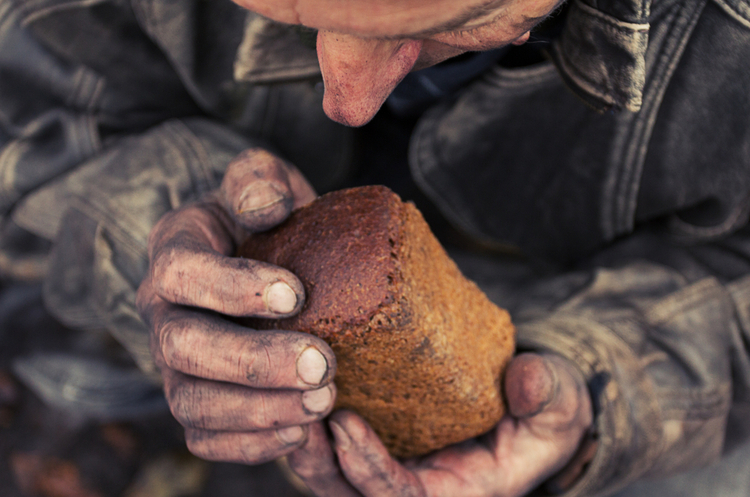Hunger is canceled: How food security stabilisation will affect the support of Ukraine
Food prices have returned to the pre-war level. But for how long?

The threat to world food security that months back was recognized as the number one global risk has actually come to naught. Nowadays prices for cereals, oils, and their derivative foodstuff have returned to their pre-war levels or even decreased to lower rates on some positions.
Stabilisation is reflected in the FAO index – the rate that consists of five components: meat, dairy products, grain, oil, sugar and shows the price dynamics of basic foodstuff. In July, a reduction of this figure by 8.6% was recorded, which is the most striking reduction since October 2008. Mind examined how such dynamics may affect the global interest in shortening the war in Ukraine.
How the food grows cheaper on the global market: what exactly and how much?
Every day prices are farther from the March collapse when the price of food on the world market reached its historical climax, and the FAO Food Price Index was 159.3 points, the highest on record since 1990.
FAO Food Price Index Dynamics
| Date | Index value |
| January 2022 | 135,6 |
| February 2022 | 141,1 |
| March 2022 | 159,7 |
| April 2022 | 158,4 |
| May 2022 | 157,9 |
| June 2022 | 154,3 |
| July 2022 | 140,9 |
Data: FAO
Crops got cheaper by 11.5% during the month, whereas wheat prices fell by 14.5% against June, and corn became cheaper by 10.7%. Compared to the grain price peak recorded in May, wheat prices were lowered by 27%, corn – by 23%.
Oils price index was degraded by 19.2% – to the minimal rate during the last 10 month.
Dairy price index is now 2.5% lower than its June figure.
Meat prices were reduced by 0.5% for the first time after the half a year of steady growth.
Sugar became 3.8% cheaper.
Why does foodstuff go down in price and is there any “merit” of Ukraine in this?
Prices are reduced, pressed by objective market factors: the harvest coming from the Northern hemisphere and big transit stocks. As for vegetable oils, prices were brought down by expectations for a significant supply increase in Indonesia, as well as soybean and rapeseed quotation collapse due to the prolonged period of stagnant demand and expected rich harvest.
The Istanbul Agreement’s impact that allowed the return of Ukrainian grain to the world market, although in part, should not be overestimated – it was implemented when food prices had already began to go down. It is, actually, one of the versions of why the kremlin went for the agreement – the food security factor was losing its weight, so it was then when such a “good-will gesture” was strategically more beneficial.
Looking backwards, it's obvious that there were not any physical factors for the record price increase half a year ago. The March surge had exclusively psychological ground and was connected to the alarmist prognoses that exporting from the Black Sea region would stop for long.
Can food grow on price once more and why?
The uncertainty risk of the export regime from Odesa ports persists as with all agreements, a party to which is russia. But apart from war risks, sectoral ones also threaten food security in the future season. David Beasley, the Executive Director of the World Food Programme, said that issues with access to foodstuffs in the world will be present at least until next year.
Cost of food might turn out to be unpleasantly high even when the Black Sea export is formally free.
Grain export potential from Ukraine, first of all, will significantly decrease due to physical shortening of harvest caused by the provisional annexation of the portion of territories and troubles with sowing and harvesting campaigns. The present harvest forecast is less than 65 million tons, and even this figure brings serious doubts in its reliability.
Many producing countries, like the USA and the EU states, have also suffered severe droughts. This will also influence the global supply.
One more factor that supports growth of price for the future harvest is the record high worth of fertilisers. It is caused, on one hand, by the reduction of supplies from russia and belarus, and the high cost of gas for their production, on another.
And finally, growth in price provokes the weakening of national currencies, such as Turkish lira and Egyptian pound. In spite of the reduction of agri-products’ prices in dollar equivalent, their cost raised to the devaluation level on the domestic market of importing countries.
Although, the acuteness of “grain issue” apparently decreases rapidly. This is reflected in the digital equivalent of the FAO Index and in the general tone of voice in western mass media as well. When the main narrative in April – May was “deadly starving millions in Africa”, now the actual topic is the inflation jumps in the Eurozone and preparing for the heating season.
Nowadays, when export is formally unblocked, the issue of food security seems to be exhausted and this factor will not rouse international support any more. Whether it will come back on the agenda or not, we will learn nearer to spring 2023 when the prospects – hardly bright – of the coming season’s global harvest will be clear.
If you have read this article to the end, we hope that means it was useful for you.
We work to ensure that our journalistic and analytical work is of high quality, and we strive to perform it as competently as possible. This also requires financial independence. Support us for only UAH 196 per month.
Become a Mind subscriber for just USD 5 per month and support the development of independent business journalism!
You can unsubscribe at any time in your LIQPAY account or by sending us an email: [email protected]


